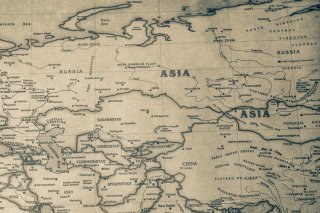Central Asian Connectivity Is Crucial to America’s Strategic Interests
What rationale and strategies drive U.S. engagement in shaping the establishment of new trade routes for Central Asian trade?
Geopolitically, the route is the most aligned with U.S. strategic interests. For one, it passes through countries that are not members of the Russia-led Collective Security Treaty Organization and the Eurasian Economic Union. These nations also partner in the North Atlantic Treaty Organization’s (NATO) Partnership for Peace program, notably exemplified by Georgia and Azerbaijan. Finally, this route culminates in Türkiye, a major U.S. NATO ally.
This alignment thus seamlessly intertwines with the United States’ overarching foreign policy objectives, underscoring the Caspian route’s pivotal role in advancing multifaceted interests and forging enduring partnerships across the dynamic Central Asian landscape.
How Can the United States Support Central Asian Connectivity?
It is evident that Washington should position the Caspian Route—traversing the Caspian Sea, Azerbaijan, Georgia, and Türkiye—as the paramount conduit for international trade for the Central Asian countries. To that end the United States should exhibit a readiness to undertake a number of strategic actions.
First, Washington should make strategic investments in regional port infrastructure. The route passing through the Caspian Sea, often referred to as the Middle Corridor, currently only has a capacity equivalent to 5 percent of the capacity of land route through Russia (known as the Northern Corridor). In other words, the Caspian Route requires significant capacity improvements to effectively provide a strong alternative to the portion of trade passing through Russia. If Washington wishes to facilitate greater trade through this route at Russia’s expense, it will have to necessitate investments in the comprehensive expansion of cargo handling capacities at crucial ports, including the Port of Baku in Azerbaijan, the Aktau and Kuryk ports in Kazakhstan, and the Port of Turkmenbashi in Turkmenistan.
Second, Washington should make similar investments in regional rail infrastructure, including rail ferries. Rail ferries, as the name implies, involves transporting train blocks using specially designed ships equipped with railway tracks. Such as system is utilized for cargo transportation across the Caspian Sea, but is at present very limited in its capacity, meaning that it is unable to handle a large potential shift in trade volume from Russia to the Caspian Route. To further facilitate trade along this route, it may be necessary for Washington to consider allocating funds for a greater number of rail ferry ships in Azerbaijan, Kazakhstan, and Turkmenistan, or support the development of newer, more efficient technology. Along with this, to actively promote trade via the Caspian Route, it would also be beneficial for the United States to cooperate with local railway authorities to modernize existing railway networks, particularly the Baku-Tbilisi-Kars railway. Such investments aimed at increasing railway capacity can establish a stronger connection between the Central Asian region and the Mediterranean Sea, further strengthening U.S. interests in the region.
Third, Washington should allocate more diplomatic resources and attention toward engaging with countries along the Caspian Route. The C5+1 platform has proven a successful and effective forum for dialogue, and should be continued. It could also be potentially expanded to include other countries along the Caspian Route, particularly Azerbaijan, due to its pivotal role.
By strategically investing in and engaging local partners, the United States can elevate the Caspian route’s capacity, ultimately not only fostering trade diversification and reinforcing ties with regional countries, but also advancing its own interests in the region.
Ibrahim Mammadov is a Research Fellow at the Caucasian Center for International Relations and Strategic Studies (QAFSAM). He is currently also a Masters of Arts in Diplomacy and International Affairs student at ADA University, where he obtained his Bachelor’s degree.
Image: Shutterstock.

